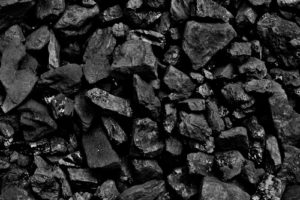Today you may not have a fire burning in your fireplace or stove, but you will soon! Every day a fire burns, byproducts rise up the chimney, including soot and creosote. Neither are serious when the system is serviced regularly, but when important appointments are neglected, the creosote can be a dangerous and unwelcome visitor. Because it’s made up of flammable tar, it can lead to chimney fires, putting your home and family at risk.
Stage 3 Creosote
When creosote is not removed during a standard chimney sweep or when more is produced than ordinary, a buildup can occur. Buildups are fire hazard and can even obstruct airflow. A stage 3 buildup is even more difficult to remove than regular creosote and soot. Stage 3, or glazed creosote, is the result of a serious buildup in which the creosote has become heated and water vapors evaporate, leaving behind a glazed, hardened mass. The problem? Once the water is vaporized, the glazed creosote that’s left behind is a concentrated form of tar, a flammable material that can cause a devastating chimney fire.
Stage 3 Removal
Instead of brushes and vacuuming, glazed creosote has to be chemically removed. In fact, an amateur will likely damage the liner or masonry attempting to remove glazed creosote. At Pristine Sweeps we use an industrial product that transforms the creosote as its absorbed. It flakes away and falls into the chimney where it can be easily brushed and vacuumed away.
Preventing Dangerous Buildup
The only way to prevent a dangerous buildup is to remove the creosote before it is a serious issue and by preventing extra creosote from entering the flue.
–Routine Services
Make sure to schedule routine services now and avoid hazards this fall. A chimney professional will recognize a creosote buildup during a standard chimney sweep or chimney inspection.
–Necessary Repairs
Necessary repairs should be made before burn season. Missing or broken parts and damage can bring down the efficiency of the system, which contributes to creosote buildup.
–Properly-Seasoned Wood
Burning “green” or “wet” wood will increase the amount of creosote produced by the fire. The water content in the wood causes it to burn incompletely, increases the amount of particulate pollution, and produces more creosote.
–Proper Use of Appliance
When the appliance or damper is used improperly, the fire will produce more creosote. Many homeowners make the mistake of smoldering a fire instead of feeding a steady flame or just letting it die. Closing the damper while a fire is burning can cause an incomplete burn and add to the creosote problem.
Schedule Now
Schedule creosote removal with Pristine Sweeps and you can rest assured that your fireplace and chimney will be ready for the first fire of the season. Our technicians will use a specially-formulated chemical cleaning product to remove the glazed creosote as if it were never there. We’ll leave the chimney in better shape than ever, and we can help you determine the cause of the buildup in the first place.
Call Pristine Sweeps today at 206-574-8414 and beat the fall rush.
